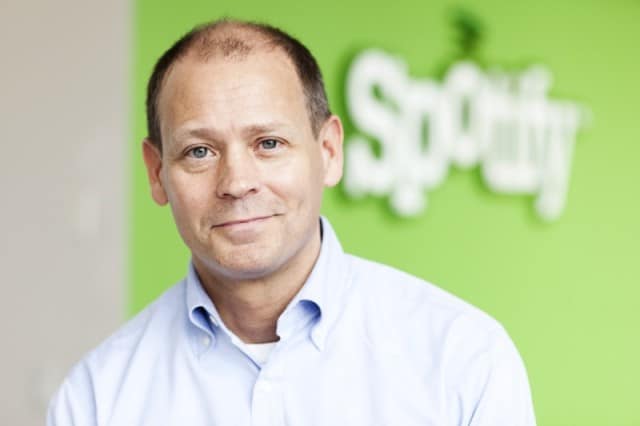
Early last week, a six-month promotion period, during which U.S. users were exempted from Spotify’s five-plays-per-song, 10-hours-per-month limits, was due to end for the first of the service’s American adopters, if reports were to be believed. But that apparently hasn’t yet happened.
U.S. users are apparently still enjoying desktop streaming with no such limits, if the absence of gripes in social media is anything to go by.
Reasons are not clear, but Spotify is a firm believer in using limited desktop free to drive premium subscriptions. It has been also been experimenting with 48-hour free trials and with free retention periods for cancelling subscribers, as it figures out the most attractive freemium levers to push.
Conversion and adoption
It appears to be working. Speaking during an event at Universal Music Group in London on Thursday, Spotify chief content officer Ken Parks revealed Spotify has now hit three million paying subscribers. That’s up from 2.5 million in November, when Spotify said it had 10 million active users and a 15 percent premium conversion ratio. Now Spotify says it is converting 20 percent to paid; it did not update the active-users count, though mathematics suggests it is 15 million.
This success, as was already known, is driven by ringfencing mobile for premium-only. “This is the one thing people are willing to pay for,” Parks said. “We don’t think there’s a big willingness for people to pay for streaming to the PC.”
Sitting alongside Parks, Universal’s global digital chief Francis Keeling said: “The one thing Spotify has taught us is the necessity to have a free trial period to get consumers to see how good these services are.” Spotify’s Parks added: “Users who are exposing their listening on Facebook are three times as likely to become paid subscribers.
“The vast majority of customers are paying 120 dollars, pounds or euros every year, which is around twice the amount the average user purchases on a download service every year.”
More revenue streams
Where next? Free is not just a premium conversion tool; advertising to free users makes up a sizeable minority of Spotify’s revenue. But Parks said: “We’ve got at least a couple of different revenue streams. Those won’t be the only ones over time.” He told paidContent e-commerce may become Spotify’s third revenue plank.
Now that Spotify has an in-app platform for third-party services like gig ticket seller Songkick, Spotify could take a cut from transactions third parties process inside Spotify, Parks suggested, albeit only speculatively.
Absentees punishing
Separately, Parks made a pitch to the small number of artists and labels withholding their music from streaming services like his over payouts.
“Withholding a record from Spotify doesn’t mean that it’s not available for streaming,” he argued. “All of this stuff is available on YouTube (NSDQ: GOOG). You’re just pushing them to somewhere it’s not monetisable.
“There’s illogic behind withholding a record. What you really want to do is reward the people who are spending $120 a year, rather than punish them by not making the records available on the platform.”
Most Spotify refuseniks have been cottage-industry, artist-owned labels or artists themselves, citing low payouts from label royalties. But EMI’s Coldplay also withheld its latest album from streaming services for the time being.
Sitting alongside Parks, Universal’s global digital chief Francis Keeling, whose own label – the world’s largest – includes some artists holding out from Spotify, echoed Parks’ comments: “The only thing those artists are doing are alienating their fanbase.
“Our agreements with artists are on a case-by-case basis. Over time, we’re trying to convince our artists that streaming services are the right thing to do and these services should be supported.”
Refuseniks make up just a tiny fraction of Spotify’s total addressable label partner base. Spotify explains that it mostly pays labels, not artists.